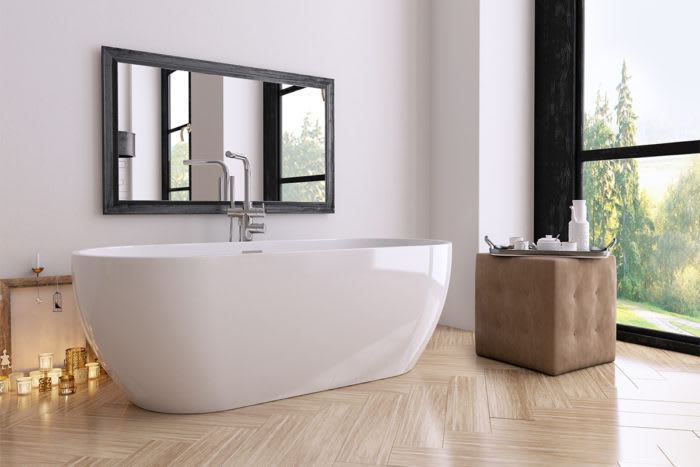{Website
Are you currently hunting for selective information about Finding the Right Plumbing Expert?

Polymer baths, shower trays, as well as various other acrylic washroom ware have come to be more typical in shower rooms in current times. Not as elegant and also sturdy as enamel and porcelain baths and components, they are more budget-friendly and also serve pretty much the exact same fundamental function. Some usual instances of damage to acrylic washroom fixtures include staining, cracks, openings, etc.
Scratched shower or bathroom surface
Polymer shower room fixtures are not abrasion-resistant like enamel varieties. Being a very soft product, acrylic scratches can even be hidden without layer or dental filling. For these, you must seek specialist aid for your bath repairs.
Chain reaction
Occasionally, people try to paint the entire surface area of their acrylic bathroom by themselves either because they do not such as the shade to conceal imperfections. You should never ever use paint cleaner on acrylic bathrooms. Paint removers do not react with the surface area of steel baths, they ruin acrylic bathrooms irreversibly.
Bath Discoloration
With long term use of acrylic baths comes staining or discoloration. While some stains can be eliminated conveniently, using special chemicals, others need that the bathroom be resprayed. It is important to note that bleach or cleaning agents do really little in removing such discoloration as well as they might also worsen it. Many times, these cleaning up agents cause staining in time. Aromatherapy oils loosen up the dirt in many cases therefore bring back the bath to its previous glory. Cleansing and also polishing likewise often. For more stubborn spots, you will certainly need a brand-new layer of covering. This sort of dealing with will certainly call for a specialist.
Split Acrylic Baths
The life-span of acrylic as well as fiberglass baths is up to 15-20 years for shower frying pans and also baths, usually. Splits in an acrylic shower tray are most likely among the simplest problems to fix for a repair professional. This is the same for PVC, material, and various other such materials.
Acrylic bathrooms, shower trays, and other acrylic bathroom ware have come to be a lot more usual in shower rooms in current times. You ought to never ever use paint cleaner on acrylic bathrooms. Paint eliminators do not react with the surface area of steel baths, they ruin acrylic bathrooms irreversibly. With extended usage of acrylic baths comes discoloration or discoloration. The lifespan of acrylic as well as fiberglass baths is up to 15-20 years for shower frying pans as well as bathrooms, normally.
How to clean Acrylic shower
USE THESE NON-ABRASIVE CLEANERS
We recommend that you clean your acrylic bathing product made of Delta ProCrylic or Acrylic with Innovex Technology with non-abrasive soaps and cleaners, such as:
- Dishwashing detergent
- Power Bathroom Cleaner
- CLR® Bath & Kitchen® Cleaner
- Formula 409® All-Purpose Cleaner
- Iron Out® Rust Stain Remover
When it’s time to clean, always use a terry cloth towel, soft cloth or sponge to avoid scratching the acrylic surface. Don’t use abrasive scrubbing pads, steel wool or sponges, cause permanent damage to the acrylic material. If you use a drain cleaner or clog remover, be sure to rinse thoroughly with water so no product is left standing near the drain.
Some chemicals and cleaners may deteriorate acrylic surfaces, causing cracks and, potentially, property damage. To avoid this, don’t use cleaning products that state on their label that they are not suitable for use on Acrylic, ABS, Polystyrene or Plastic. Be sure to check the label of any product before you apply it to the surface; it’s easier to avoid damage than to try to remedy it.
DO NOT USE THESE CLEANERS
Chemicals we do not recommend using to clean acrylic showers/tubs:
- Solvents (turpentine, lacquer thinner, mineral spirits, paint thinner, MEK, xylene, acetone, naphtha, etc.)
- Simple Green® All-Purpose Cleaner
- Pine-Sol® Original
- Scrubbing Bubbles® Cleaner
- Tilex® Bathroom Cleaner
- The Works® Tub & Shower Cleaner
- Lysol® with Hydrogen Peroxide Multi-Purpose Cleaner
- Windex® Vinegar Multi-Surface Cleaner
Sealant Application Tips
When you’re ready to apply sealant, a little planning goes a long way. Pick up some painter’s tape and use it to mask off the seam to help make cleaning up easier. When you’re applying the bead, use a constant, steady speed to avoid an uneven finish. Use a caulk tool or a plastic spoon to work the sealant into the joint. Wetting the tool with denatured alcohol will help create a smooth finish. Follow the directions on the back of the tube for cure time.
Certain chemicals and cleaners may deteriorate acrylic surfaces, causing cracks and, potentially, property damage. After you’re finished applying it, clean up the product surface and remove any excess sealant with denatured alcohol. Don’t use solvents (turpentine, lacquer thinner, mineral spirits, paint thinner, MEK, xylene, acetone, naphtha, etc.) that can wreak havoc on an acrylic surface.
With a little care and consideration, you can prevent damage to your acrylic shower or tub. Keep a supply of soft cloths handy and remove any damaging products or abrasive scrubbing items from the bathroom to ensure they aren’t around when it’s time to clean.
https://www.deltafaucet.com/design-innovation/inspiredliving/how-to-clean-acrylic-shower

I came across that write up on Hiring a Plumbing Company when doing a lookup on the web. Enjoyed reading our write-up? Please share it. Help someone else locate it. Thanks for your time. Visit again soon.
Try Here
Comments on “5 Points No One Tells You around Shower & Bathtub Wall Panels”